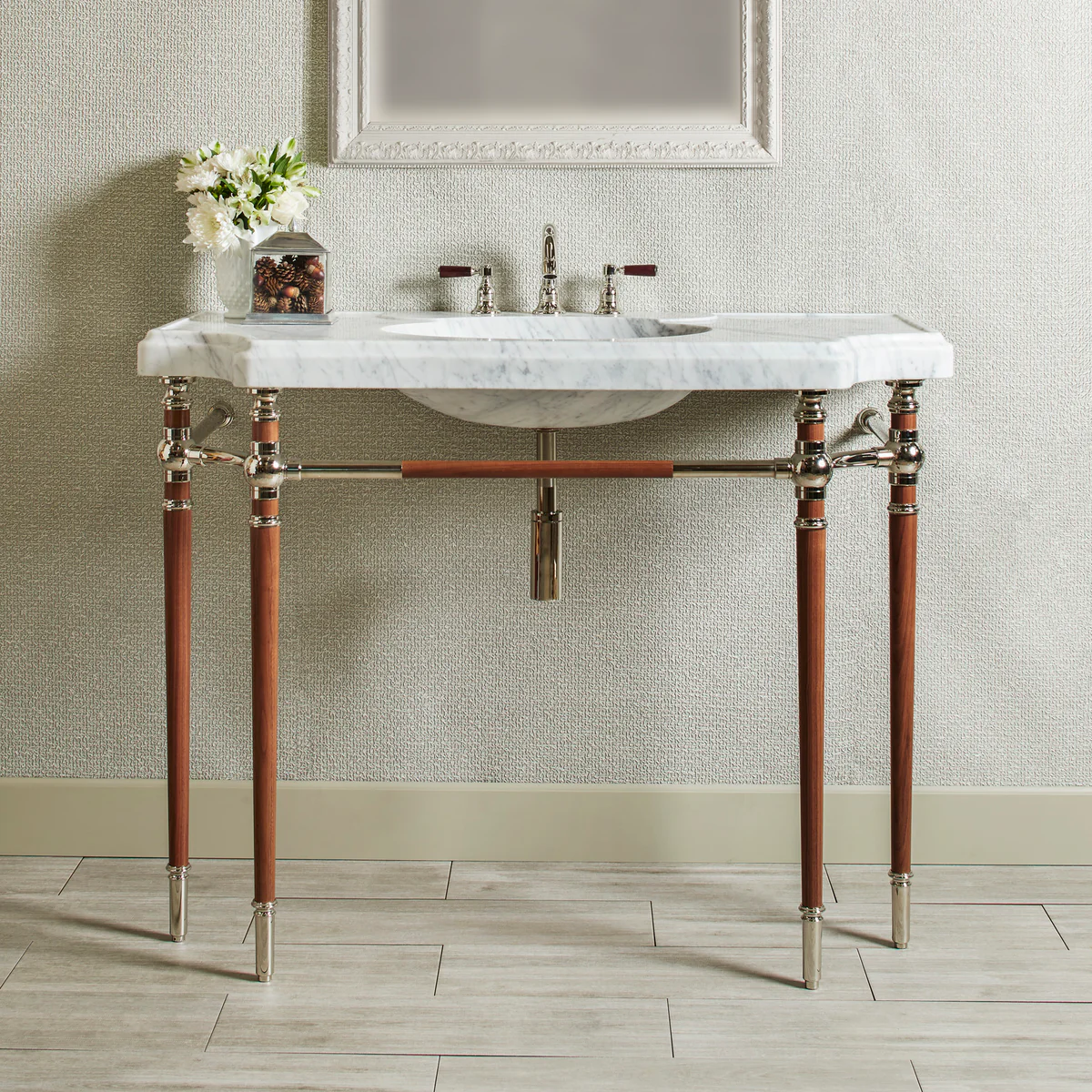
Professional Guide to Bathroom Sinks and Plumbing by SeaStack Plumbing
Types of Bathroom Sinks
-
Pedestal Sink:

-
-
Design: A classic option that stands on a pedestal, perfect for smaller bathrooms where space is at a premium.
-
Plumbing: The plumbing is hidden within the pedestal, creating a clean and uncluttered look. Drain and supply lines are typically run through the wall or floor, ensuring seamless integration.
-
-
Wall-Mounted Sink:

-
Design: Attached directly to the wall, this sink leaves the floor space beneath free, creating an open and airy feel.
-
Plumbing: Requires strong wall support to hold the sink securely. Pipes are routed through the wall, making the plumbing virtually invisible.
-
-
Vessel Sink:

-
Design: Sits on top of the counter like a bowl, adding a stylish and contemporary touch to the bathroom.
-
Plumbing: The drainpipe runs through the countertop, and the supply lines come from beneath the counter, providing a neat and organized appearance.
-
-
Undermount Sink:

-
Design: Installed beneath the countertop for a seamless and modern look, this sink is easy to clean and maintain.
-
Plumbing: Requires mounting hardware to support the sink. The drain and supply lines are hidden under the counter, enhancing the sink’s sleek design.
-
-
Drop-In Sink (Self-Rimming Sink):

-
Design: Fits into a cutout in the countertop, with the edges resting on the counter for easy installation and a traditional look.
-
Plumbing: The drain and supply lines are routed through the countertop, providing efficient and effective plumbing.
-
-
Console Sink:

-
Design: Similar to pedestal sinks but with legs that support the basin, offering both style and stability.
-
Plumbing: The plumbing is usually exposed, allowing for decorative plumbing fixtures that add a touch of elegance to the bathroom.
-
-
Integrated Sink:

-
Design: Molded as part of the countertop, usually made from solid surfaces like quartz or marble, for a cohesive and high-end look.
-
Plumbing: The drain and supply lines run through the cabinet beneath the counter, maintaining a streamlined appearance.
-
How to Plumb a Bathroom Sink
- Assemble the Sink Components:
- Install the Faucet: Attach the faucet to the sink according to the manufacturer’s instructions, ensuring a secure and watertight connection.
- Install the Drain Assembly: Apply plumber’s putty around the drain opening, insert the drain flange, and tighten it from underneath to prevent leaks.
Connect the Water Supply Lines:
- Attach the Supply Lines: Connect the hot and cold water supply lines to the corresponding faucet inlets using adjustable wrenches to ensure tight and secure connections.
- Connect to the Shut-Off Valves: Attach the other end of the supply lines to the shut-off valves beneath the sink, making sure the valves are securely connected to the water supply pipes.
Install the P-Trap:
- Assemble the P-Trap: Connect the P-trap to the drain tailpiece coming from the sink, ensuring that all connections are tight and properly aligned to prevent leaks.
- Connect to the Drain Pipe: Attach the other end of the P-trap to the wall or floor drain pipe, ensuring a snug fit to maintain a water seal and prevent sewer gases from escaping.
Test for Leaks:
- Turn on the Water Supply: Open the shut-off valves and turn on the faucet. Check for any leaks around the supply line connections and drain assembly, making adjustments as needed.
- Inspect the P-Trap: Ensure that the P-trap is properly sealed and not leaking, tightening any connections if necessary.
Secure the Sink:
- Mount the Sink (if applicable): For wall-mounted or pedestal sinks, ensure that the sink is securely attached to the wall or floor using mounting brackets or anchors.
- Seal Around the Sink: Apply a bead of silicone caulk around the edges of the sink where it meets the countertop to prevent water from seeping underneath.
Proper installation of a bathroom sink ensures functionality and prevents leaks. At SeaStack Plumbing, we pride ourselves on delivering top-notch plumbing services. Whether you’re installing a new sink or updating an existing one, our team of experienced professionals is here to ensure that your plumbing is done right, the first time. Contact us today to schedule a consultation and transform your bathroom into the oasis you’ve always dreamed of.
The cost of installing a bathroom sink can vary based on several factors, including the type of sink, the complexity of the installation, and any additional plumbing work required. Here’s a general idea of the price range:
- Basic Installation: Typically ranges from $ 598 to $ 896. This includes labor, materials, and basic plumbing work.
- Average Cost: On average, you can expect to pay around $ 598 to $ 896 for the entire installation process.
- High-End Installation: For more complex installations or luxury sinks, the cost can go up to $ 683 or more.
Keep in mind that these prices can vary depending on your location, the specific sink model, and any additional modifications needed for your bathroom.
Would you like more detailed information on any specific type of sink or installation
